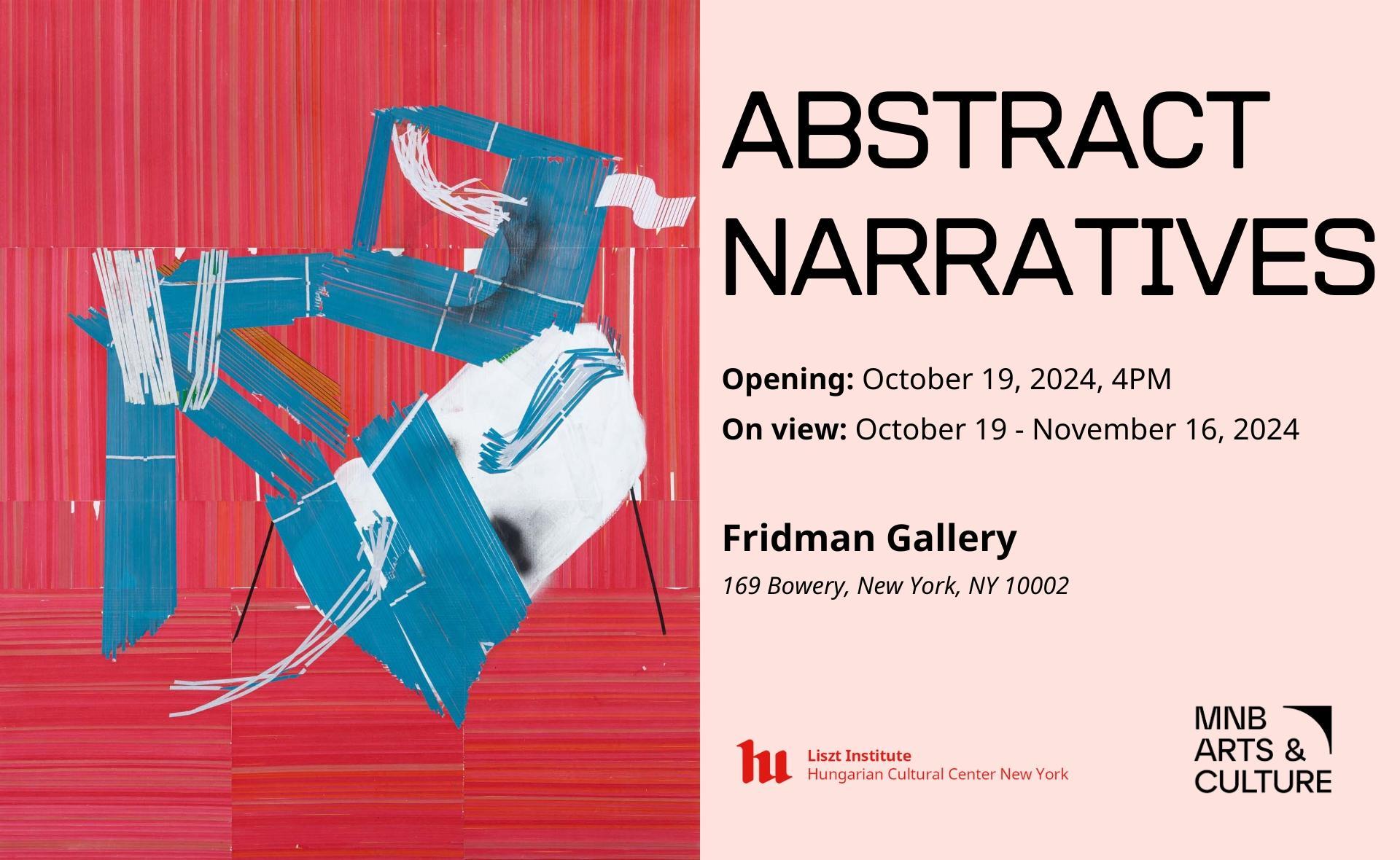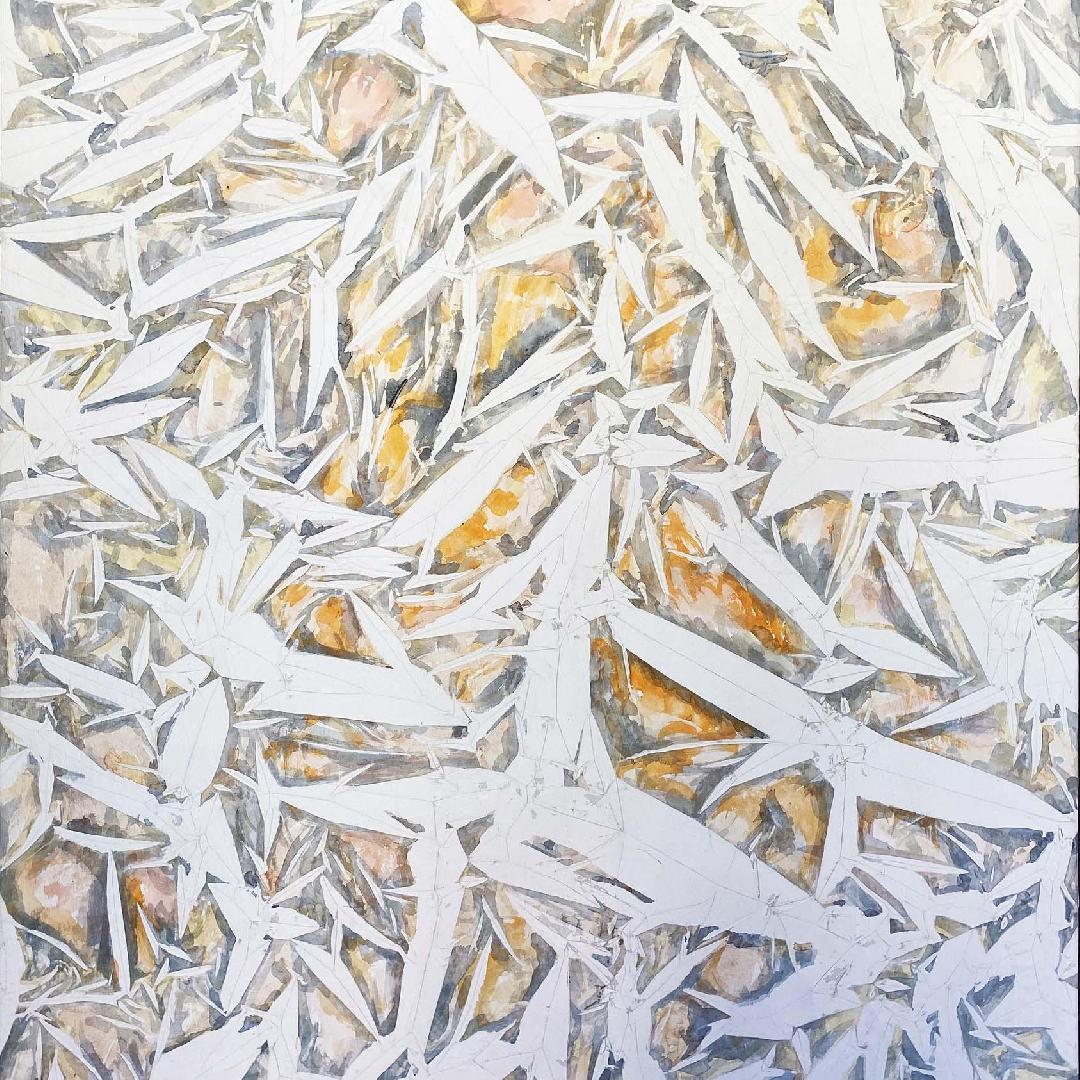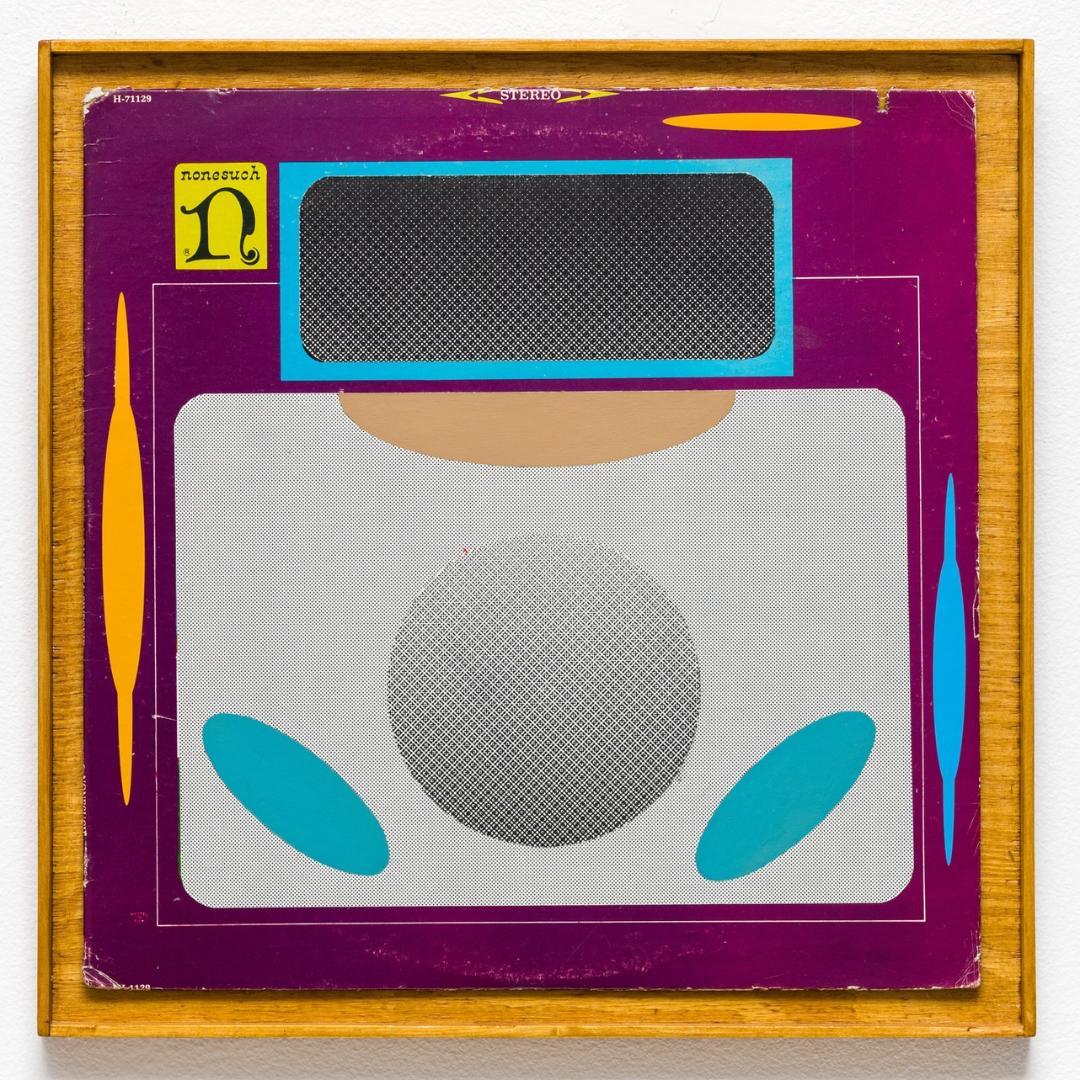169 Bowery, New York, NY 10002
Join us for a unique art exhibition organized by the Central Bank of Hungary, the MNB Arts & Culture and the Liszt Institute New York showcasing the most captivating, original works from the art collection of the Central Bank in New York!
Immerse yourself in the beauty, complexity and unique nature of Hungarian contemporary art through the masterful works by some of the most accomplished artists Hungary has to offer. The exhibition Abstract Narratives aims to open up the rigid borders of judgement and highlight the fact that abstraction is a global language in the arts.
DETAILS
OCTOBER 19, SATURDAY
- Opening - 4PM
- Curatorial tour by Zsolt Petrányi, the curator of the exhibition - 5PM and 7PM
Music provided by DJ Máté Kozári
Champagne and wine will be served!
The exhibition is on view through November 16.
ARTIST MEET AND GREET with Zsófia Barabás
- November 12, 6PM - Guided tour by visual artist Zsófia Barabás

Among the artistic trends of the twentieth century, abstraction is notable for its ability to continually reinvent itself. It has been enriched by various inspirations, from ecology to design, from science to psychology; its transformations follow changes in our living conditions and in our worldview. Moreover, the meaning we end up ascribing to a work of abstract art is also influenced by our knowledge of the local context specific to the artist.
At the beginning of the twentieth century, abstraction ushered in the new era of modernism, reinventing painting and sculpture to break with traditions of representation. In expressing the technological and social changes of the time, it attempted to create a universal language of cross-cultural understanding, yet always carrying within it local connotations. Abstract Narratives focuses on this phenomenon by presenting abstract artists from a specific part of the world, whose unique approaches raise questions concerning historiography and regionality of art.
The early development of Hungarian abstraction was influenced by artists with international reach, such as László Moholy-Nagy and György Kepes, who emigrated before or after the Second World War. After the communist takeover in 1948, abstraction was branded an imperialist, bourgeois and anti-working-class style. In this context, from the 1960s on, abstraction in Hungary (and other Soviet-bloc countries) was not merely a counterpoint to figuration of social realism, but also a symbol of political resistance and freedom of expression. While adopting international stylistic characteristics like gesture and color field painting, Hungarian abstraction was also searching for its social, architectural and design role in the local visual culture. Rooted in Kassák's interest in constructivism and the pure compositions of Moholy-Nagy, the abstract movement was connected with pure forms, clear colors, hard edges and surfaces with unseen brushstrokes.

Simon Hantai: Aquarelle
About the MNB Arts & Culture
The aim of MNB Arts and Culture, which managesand takes care of the collection, is to make the collection accessible and meaningful to the public. Its goal is to make its material widely accessible and familiar to the general public, and researchable and processable for the profession, both on the domestic and international scene.
The Central Bank of Hungary’s efforts to promote the arts align with its social responsibility strategy. According to this, its task is to present and support the values of fine arts in Hungary and contemporary Hungarian artists to preserve and perpetuate the traditions of culture and art.
As part of this mission – and in line with international central banking practices – in recent years, it has established a collection of fine art through its subsidiary MNB-Ingatlan Kft., which now contains more than a thousand works of art, including pieces by such renowned artists as Judit Reigl, Simon Hantai, Ilona Keserü, Imre Bak and Dezső Korniss.
In line with the practices deployed in the case of the collections of international central banks and corporate institutions, a large part of the collection, nearly 700 works of art, is on display in the offices and common areas of the buildings used by the central bank. While in the Buda Centre of the Hungarian National Bank, it is typically figurative or calligraphic work which is exhibited, in the Hungarian Money Museum and Visitor Centre (the former Postal Palace), the selection represents the work of the Neo-Avant-Garde generation and the tendencies of Geometric Abstraction.
However, the installation is dynamic, with works often relocated and rotated to be displayed in other exhibition spaces, allowing visitors to experience a broader range of works.

Márk Fridvalszki: Haunts My Reverie I plastic film xerox, veneer sheet
About the Fridman Gallery
Founded in 2013, and located on Manhattan's Lower East Side, Fridman Gallery champions a diverse roster of international contemporary artists working across various media.
The gallery takes risks and organizes critically acclaimed exhibitions, such as the first solo shows in New York by Nate Lewis, Nina Katchadourian, Wura-Natasha Ogunji, and Summer Wheat, and first-ever solo exhibitions of Dindga McCannon and Milford Graves, whose works have now earned a place in the art-historical canon after decades of neglect by the mainstream art world. Our 2022 exhibition "Women at War", featuring 12 women artists from Ukraine responding to the current war, has been touring university museums across the U.S. and Canada. In 2025 we will present solo exhibitions by both emerging talents – Azuki Furuya and Will Maxen, and established artists – Remy Jungerman and Athena LaTocha. Additionally, the gallery actively participates in leading international art fairs, such as Art Basel Miami Beach, the Armory Show, Art Cologne, and Paris Photo.
Fridman Gallery is consistently recognized for its ambitious performance program, featuring a full schedule of experimental performance art. This includes the annual New Ear Festival, a comprehensive music festival with a curatorial emphasis on contrast to foster cross-pollination among audiences. In September of 2016, the gallery hosted “9e + 50”, a dedication to the seminal “9 Evenings of Theater and Engineering”, featuring performances by Alvin Lucier, Pauline Olivieros, Simon Forti, and others. The physical space also serves as the home for choreographer Abigail Levine's "Restagings" (2017–2024), a durational, multi-part series that reinterprets canonical minimalist and conceptual artworks as performances.
With a commitment to pushing artistic boundaries, Fridman Gallery contributes significantly to New York City's vibrant art scene, fostering dialogue, culture, and exploration within the ever-evolving landscape of contemporary art.
